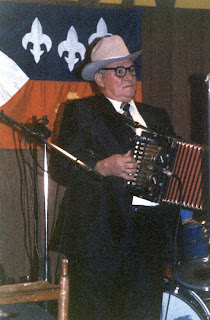Mestre Cardoso
Galo de Campina (2005)
Tracks:
1. As origens de Ourém (5:38)
2. Galo de campina (3:10)
3. Sereia (2:27)
4. Baiana (2:18)
5. Mandamento da cachaça (4:24)
6. Eu mandei fazer uma rosa (2:51)
7. Ataque de nova York (3:10)
8. A prisão de Saddam Hussein (2:45)
9. Baralho (8:13)
10. Mandei fazer uma trincheira ontem (2:50)
11. Marcha do Clube do Remo (2:04)
12. Marcha do Paysandu (2:16)
13. O namoro de hoje em dia (2:54)
14. Adeus morena (5:16)
The Musicians:
Aristides Borges ("cavaquinho");
João "Cego" da Silva Matos (accordion and choir);
Raimundo "Tuíca" da Silva Matos (percussions and choir);
Fábio Cavalcante (flute and choir);
Lila Bemerguy (choir) and
Mestre Cardoso (percussions and voice).
Produced, arranged and recorded by Fábio Cavalcante.
This record was released in october 2005, in Ourém (PA).
It shows Cardoso singing marchs, sambas, "xotes" and "carimbós".
1. As origens de Ourém (5:38)
2. Galo de campina (3:10)
3. Sereia (2:27)
4. Baiana (2:18)
5. Mandamento da cachaça (4:24)
6. Eu mandei fazer uma rosa (2:51)
7. Ataque de nova York (3:10)
8. A prisão de Saddam Hussein (2:45)
9. Baralho (8:13)
10. Mandei fazer uma trincheira ontem (2:50)
11. Marcha do Clube do Remo (2:04)
12. Marcha do Paysandu (2:16)
13. O namoro de hoje em dia (2:54)
14. Adeus morena (5:16)
The Musicians:
Aristides Borges ("cavaquinho");
João "Cego" da Silva Matos (accordion and choir);
Raimundo "Tuíca" da Silva Matos (percussions and choir);
Fábio Cavalcante (flute and choir);
Lila Bemerguy (choir) and
Mestre Cardoso (percussions and voice).
Produced, arranged and recorded by Fábio Cavalcante.
This record was released in october 2005, in Ourém (PA).
It shows Cardoso singing marchs, sambas, "xotes" and "carimbós".
♫☆`*♥¸¸.•*¨*•♫☆`*♥¸¸.•*¨*•♫
Here is a brief biography of Mestre Cardoso:
"José Ribamar Cardoso" was born in Parnaíba - Piauí, in january 4, 1933. His parents were João Cândido Cardoso and Maria Francisca Cardoso. He started playing the "boi-bumbá" with 10 years and with 14 years he was commanding the "Dominante".
When he was 20 years, he came to Maranhão State, where he met his wife Raimunda Lima da Silva. They had 14 sons, but only six survived. In 1954, they moved to Carutapera, and soon afterwards, to the Pará State. Cardoso arrived in Ourém in 1993, and has been living there until now.
Cardoso worked as cowboy in every place he lived. Currently, he leads the "Boi-bumbá Ouro Fino".
On this record, the tracks 'Eu mandei fazer uma rosa', 'O Ataque de Nova York', 'A prisão de Saddam Hussein', 'Mandei fazer uma trincheira ontem ' and 'Adeus morena', are played by the Ouro Fino's members.
♫☆`*♥¸¸.•*¨*•♫☆`*♥¸¸.•*¨*•♫
"José Ribamar Cardoso" was born in Parnaíba - Piauí, in january 4, 1933. His parents were João Cândido Cardoso and Maria Francisca Cardoso. He started playing the "boi-bumbá" with 10 years and with 14 years he was commanding the "Dominante".
When he was 20 years, he came to Maranhão State, where he met his wife Raimunda Lima da Silva. They had 14 sons, but only six survived. In 1954, they moved to Carutapera, and soon afterwards, to the Pará State. Cardoso arrived in Ourém in 1993, and has been living there until now.
Cardoso worked as cowboy in every place he lived. Currently, he leads the "Boi-bumbá Ouro Fino".
On this record, the tracks 'Eu mandei fazer uma rosa', 'O Ataque de Nova York', 'A prisão de Saddam Hussein', 'Mandei fazer uma trincheira ontem ' and 'Adeus morena', are played by the Ouro Fino's members.
♥
Galo de campina
Lá no jardim da princesa / No pátio do varandão
Tem muito pássaro bonito / Preso em um gaiolão
Tem sabiá verdadeiro / Canário e corrupião
E o galo de campina é campeão
Quem quiser ver belos pássaros / Vá no museu de Belém
Diferentes uns dos outros / Que só na mata é que tem
Mas se você não conhece / Eu acho bom ir também
Para ficar sabendo e querer bem
Tem muitos pássaros que andam / Parece que vai à praça
Uns cantam outros assoviam / E já outros acham graça
Tem deles de médio porte / Deles parece de raça
E nós temos a boniteza da garça
Tudo é da natureza / E para o homem ficou
Tem a terra e as águas / Foi Jesus que separou
Tem ave que é feroz / Com diferença de cor
E o pássaro Uirapuru é traidor
Lá no jardim da princesa / No pátio do varandão
Tem muito pássaro bonito / Preso em um gaiolão
Tem sabiá verdadeiro / Canário e corrupião
E o galo de campina é campeão
Quem quiser ver belos pássaros / Vá no museu de Belém
Diferentes uns dos outros / Que só na mata é que tem
Mas se você não conhece / Eu acho bom ir também
Para ficar sabendo e querer bem
Tem muitos pássaros que andam / Parece que vai à praça
Uns cantam outros assoviam / E já outros acham graça
Tem deles de médio porte / Deles parece de raça
E nós temos a boniteza da garça
Tudo é da natureza / E para o homem ficou
Tem a terra e as águas / Foi Jesus que separou
Tem ave que é feroz / Com diferença de cor
E o pássaro Uirapuru é traidor
...and if you like it, there is more at the "source" including all the lyrics!
about the the producer:
Hi, my name is Fábio Gonçalves Cavalcante.
Well I did :) Thank you Fábio & Mestre Cardoso!
I am 33 years old, musician, and I live in Santarém, Capital of Pará. My available material is free for non-comercial copy, use and abuse. Feel free.










































.jpg)














































+Front.jpg)

















